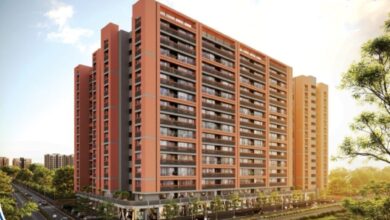Mastering General Construction: A Comprehensive Guide
General construction is the backbone of the built environment, encompassing a wide range of activities essential for creating structures that define our cities and communities. This comprehensive guide aims to provide an in-depth understanding of general construction, covering its definition, key components, processes, challenges, and the evolving trends shaping the industry.
I. Defining General Construction:
General construction, often referred to as building construction, is a broad term that encompasses the planning, design, and execution of projects to construct residential, commercial, industrial, and infrastructure facilities. It involves the collaboration of various professionals, skilled laborers, and stakeholders to bring architectural visions to life.
II. Key Components of General Construction:
A. Project Planning:
Project planning is the initial phase where architects, engineers, and project managers collaborate to define the scope, budget, and timeline of the construction project. This stage involves feasibility studies, site assessments, and regulatory compliance evaluations.
B. Design and Engineering:
The design phase involves translating architectural concepts into detailed plans and specifications. Engineers play a crucial role in ensuring structural integrity, while designers focus on aesthetics and functionality.
C. Permitting and Regulatory Compliance:
Before construction begins, obtaining necessary permits and ensuring compliance with local building codes and regulations is imperative. This stage involves coordination with local authorities and regulatory bodies.
D. Material Procurement:
Efficient material procurement is vital for project success. This involves sourcing construction materials, negotiating contracts, and ensuring timely delivery to the construction site.
E. Construction Execution:
The actual construction phase involves skilled laborers, construction equipment, and project managers working together to bring the design to reality. Activities include site preparation, foundation construction, framing, and other building processes.
F. Quality Assurance and Inspections:
Regular quality assurance checks and inspections are conducted to ensure that construction meets specified standards. This involves structural inspections, material testing, and adherence to safety protocols.
G. Project Management:
Effective project management is essential for coordinating various tasks, managing resources, and ensuring that the project stays on schedule and within budget. Project managers oversee the entire construction process.
III. Processes Involved in General Construction:
A. Site Preparation:
Site preparation involves clearing the construction area, leveling the ground, and addressing any environmental considerations. Proper site preparation sets the foundation for a successful construction project.
B. Foundation Construction:
The foundation is the base on which the entire structure rests. Depending on the project, foundations can include shallow foundations, deep foundations, or specialized foundation systems.
C. Framing and Structural Work:
Framing involves constructing the skeletal structure of the building. This includes walls, floors, and roofs. Structural work ensures the stability and integrity of the building.
D. Enclosure and Roofing:
Enclosure involves adding exterior walls, windows, and doors to protect the interior from the elements. Roofing is installed to provide shelter and complete the building envelope.
E. Interior Finishing:
Interior finishing includes installing flooring, painting, adding fixtures, and completing other aesthetic and functional aspects of the interior spaces.
F. Mechanical, Electrical, and Plumbing (MEP) Installations:
MEP installations involve integrating electrical, plumbing, and HVAC systems into the building. Coordination between different trades is crucial to ensure seamless functionality.
G. Final Inspections and Handover:
Before a construction project is considered complete, final inspections are conducted to verify compliance with regulations and quality standards. Once approved, the building is handed over to the owner or occupants.
IV. Challenges in General Construction:
A. Budget Overruns:
Managing costs is a perennial challenge in general construction. Unforeseen expenses, fluctuations in material prices, and changes in project scope can contribute to budget overruns.
B. Project Delays:
Timely completion is essential in construction, but various factors such as weather, regulatory approvals, and unforeseen site conditions can lead to project delays.
C. Safety Concerns:
Construction sites pose inherent risks, and safety is a paramount concern. Implementing robust safety protocols and ensuring compliance with safety regulations is crucial.
D. Environmental Impact:
Construction activities can have environmental consequences. Minimizing environmental impact through sustainable practices and waste reduction is a growing priority in the industry.
E. Complex Regulatory Landscape:
Navigating complex and ever-evolving building codes, zoning regulations, and permitting processes can be challenging for construction professionals.
V. Evolving Trends in General Construction:
A. Green and Sustainable Construction:
Increasing awareness of environmental issues has led to a surge in green and sustainable construction practices. This includes energy-efficient designs, use of eco-friendly materials, and implementation of renewable energy solutions.
B. Digitalization and Building Information Modeling (BIM):
The construction industry is embracing digital technologies, including Building Information Modeling (BIM), to enhance collaboration, improve efficiency, and reduce errors in the planning and execution phases.
C. Off-Site Construction and Prefabrication:
Off-site construction and prefabrication are gaining popularity for their ability to streamline construction processes, reduce waste, and accelerate project timelines.
D. Smart Construction Technologies:
The integration of smart technologies, such as sensors, IoT devices, and automation, is enhancing construction efficiency, safety, and project management.
E. Resilient and Disaster-Resistant Construction:
With the increasing frequency of natural disasters, there is a growing emphasis on designing and constructing buildings that can withstand earthquakes, hurricanes, and other calamities.
Conclusion:
General construction is a multifaceted discipline that plays a fundamental role in shaping the physical environment we inhabit. From meticulous planning and design to the execution of complex projects, the construction industry is dynamic and ever-evolving. This comprehensive guide has provided insights into the definition, key components, processes, challenges, and evolving trends in general construction. As the industry continues to adapt to technological advancements and sustainable practices, the future of general construction holds exciting possibilities for innovation and transformative development.


